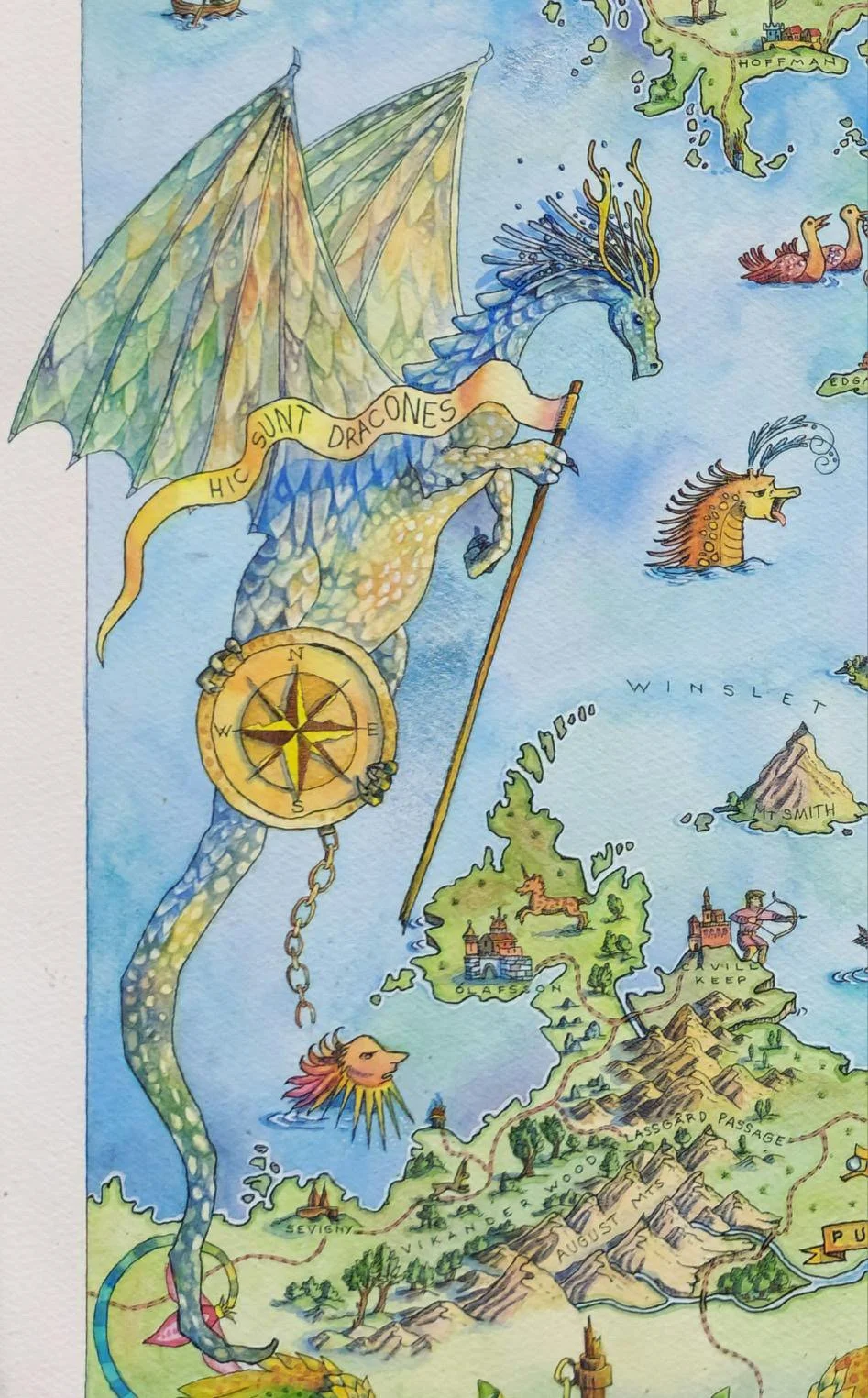Here Be Dragons | The History of One of Cartography’s Biggest Misconceptions
Hic Sunt Dracones on Hunt-Lenox Globe | Source: Wikipedia
We’ve all been there, thinking in which corner of this map we should be putting the almighty pheasw to denote where we didn’t exactly think the map through. Or maybe you went a little overboard w/ the dragon drawings and there is no need for a phrase of sorts.
Artwork is a courtesy of the one and only dragon-tamer — Karin Höijer (@karin_hoijer)
HIC SVNT DRACONES, or more commonly Here Be Dragons is a phrase believed to have been used on ancient maps to denote perilous and yet unexplored territories. Because what else screams “adventure” better than a firebreathing, sky-obscuring garangutan creature sitting on a pile of cursed treasure, right?
Well, in fact this famous sentence has surfaced in exactly two instances of cartographic history — the Hunt-Lenox Globe and the Ostrich-Egg Globe. Both dating to the early half of the 16th century and either one sitting on an outlying end of Asia. They are also the first ones depicting the New World. And that about sums it up, the rest is contemporary fan-fiction.
Medieval and Renaissance cartographers did mark unknown territories, tho. They typically used a variety of fantastical creatures, including dragons, sea serpents, and other mythological beasts. These weren’t just warnings — they were also decorative elements that showcased the mapmaker’s artistic skills, much like fantasy cartographers do today. Right, Karin? 🙂🐉
The Hunt-Lenox Globe | Source: Wikipedia
Symbolic Meaning, Modern Use & Cultural Impact
The phrase has evolved to become a powerful metaphor for the unknown and unexplored. In medieval times, dragons symbolized danger and chaos, representing the fears and uncertainties of venturing into uncharted lands.
Today, “Here be dragons” has transcended its cartographic origins. The phrase is commonly used in:
Software development, marking unstable or dangerous code
Academic research, indicating unexplored areas of study
Popular culture, symbolizing adventure and the unknown
Fil’s signature at the end of long messages, newsletters and official e-mails
The enduring appeal of “Here be dragons” likely lies in its ability to capture humanity’s simultaneous fear and fascination with the unknown. It represents both a warning and an invitation — a reminder that beyond the boundaries of the know lies both danger and discovery.
Artwork is a courtesy of the one and only dragon-tamer — Karin Höijer (@karin_hoijer)
Depictions of The Unknown Through History
Before this phrase, both ancient and medieval texts used different ways to depict dangerous or yet unexplored lands. Roman historian Pliny the Elder (circa 1st century AD) for example, wrote about fantastical creatures in unexplored regions and old Roman maps were reportedly labeled with warnings about wild beasts or savage peoples (I am looking at you, Ceasar).
Other notable works of historical cartography displaying fantastic creatures include pieces like Psalter Map (13th century) or now lost Ebstorf Map.
Unsurprisingly, instead of dragons, there are instances of Renaissance maps which included phrases “Hic Svnt Leones” (Here be lions) which were used to label uncharted African territories. In other words — “if you end up here, watch out”.
Later examples and perhaps most commonly tangled in contemporary works of fiction are maritime traditions — marking perilous waters with often-faceless sea monsters. Great popular and well-preserved work of art rather than cartography in its core is the 16th century Carta Marina by Olaus Magnus. This map is filled with numerous illustrations of sea monsters in North Atlantic hinting at the possible fear of the unexplored. This contrasts well with the Baltic sea, White sea and the Gulfs of Bothnia & Finland which are rather well referenced with fishes, seals and even reindeer marching on ice-cover waters.
Carta Marina by Olaus Magnus | Source: Wikipedia
So, while Here be dragons itself is rare, the tradition of marking unknown territories with creatures or warnings has deep roots in historical mapmaking and exploration narratives.




